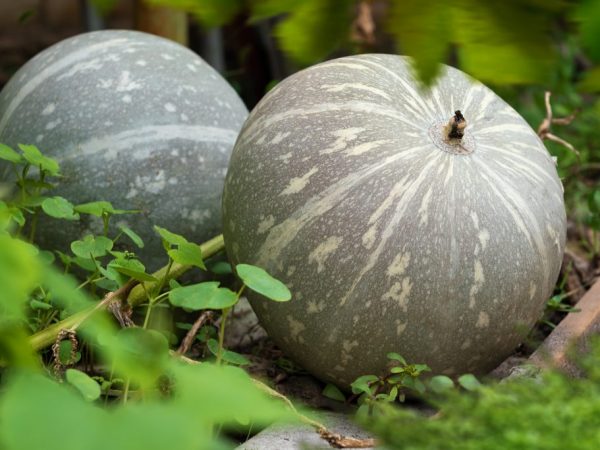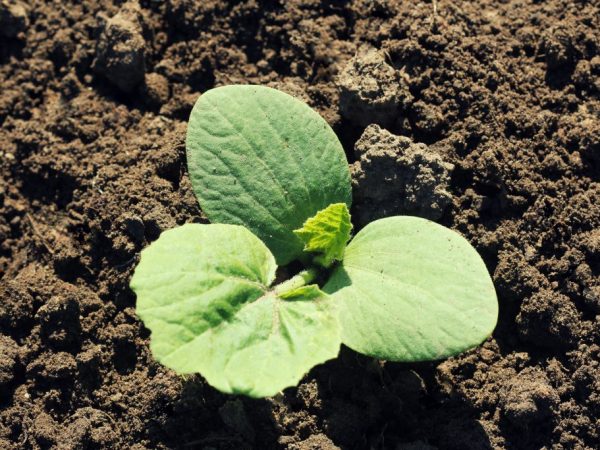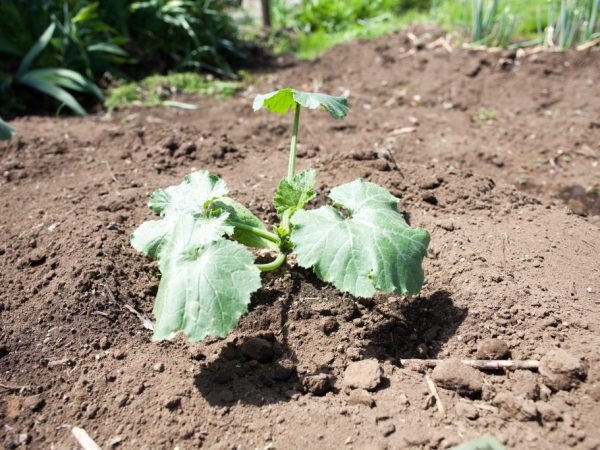Characteristics of the Volzhskaya gray pumpkin variety
The largest vegetable in the world - pumpkin - is known for its beneficial properties and taste. It is grown in any territory. One of the popular varieties is the Volzhskaya gray pumpkin, which is distinguished by its long keeping quality and resistance to diseases. It does not require special care and does not create difficulties for the gardener.

Characteristics of the Volzhskaya gray pumpkin variety
Description
Large-fruited and mid-season crops are grown throughout Russia. After the first shoots appear and until full-fledged vegetables are formed, it takes up to 4 months. It differs in productivity: the average weight of one vegetable is 9-10 kg.
The variety is well transported and grown for sale. The vegetable retains its presentation even without special conditions. The shelf life of the product is high. Characterized by gray pumpkin drought resistance. In unfavorable conditions, it loses its taste, but the crop is still formed on the bush.
Minimum watering and high ambient temperatures are not critical: cultivation of the variety and care for it are determined by the composition of the soil and the climatic characteristics of the region where the pumpkin crop ripens - negative conditions are leveled by proper care.
Bush
The variety is formed from seedlings or seeds. It grows in 4-5 months. The size of the bush is average: lateral lashes spread from the central shoot. The more sunlight, the greener the leaves.
Pubescence of the deciduous plate is moderate. The foliage is divided into visible segments. Closer to the harvest period, it loses moisture and dries up.
Description of lashes: long, medium thickness. The side color is deep green. Closer to the stalk, the color darkens - it becomes dark green with stripes. Bushes grow and can intertwine with each other. When properly watered, foliage will rise above the vegetables for added protection.
Fruit
The variety has an unusual color for a pumpkin.
The gray skin is firm and never turns yellow. Inside, the pulp is soft, rich in taste and juicy. The species has high taste: if the vegetable has time to ripen, it does not need to lie down - the pulp is ready for use. The use of pumpkin is universal. It can be eaten raw, boiled, or baked.
Description of fruits:
- the shape of the vegetable is round, slightly flattened on both sides;
- the skin is thick, without spots and ribs, elastic;
- division into segments is expressed in part - the larger the fetus, the more segments;
- the color of the pulp is yellow, and closer to harvest it becomes orange;
- the thickness of the pulp is not less than 5 cm;
- seeds are medium, round, tasty and healthy.
There is no pattern on the fruit. The rich gray color depends on the nutrition of the pumpkin during the fruiting period - if watering and fertilizing the soil is regular, the skin color is more saturated.
Growing

Seedlings are planted in warm ground
The cultivation of a pumpkin depends on the area in which it sprouts.
The variety takes root well on loam. Sandstones are also suitable for planting, but they will have to be fertilized more.Acidic soils create unfavorable conditions for its growth. Gray pumpkin is not planted on clay soils.
An area without lowlands is selected: a lot of stagnant liquid should not collect in the place, otherwise the fruits will grow tasteless and too watery. Shady land is not suitable.
A pumpkin is planted only in the warm season. The soil layer should warm up to 10 ° C. A stable temperature regime will allow the seedlings to take root faster. It is impossible to plant a vegetable in early spring: if the soil freezes, the entire planting will disappear.
Seedlings must first germinate in a warm room for at least a month.
Landing
The cultivation of the Volzhskaya gray pumpkin variety is carried out using seeds or seedlings.
In the first case, the germination period of the culture increases by 1.5-2 months. The seedling method is reliable and allows you to get full-fledged bushes by the summer.
The landing procedure is as follows:
- hole preparation. Prepare the hole in advance. It is better to dig it up a few hours before disembarkation. It is well watered, you need to allow the moisture to be completely absorbed. The depth of the hole is at least 10 cm. If seeds are planted, they are placed 2-3 pieces in one hole. Seedlings - 1 material in each hole. The distance between the holes is up to 60 cm, because the bush grows quickly and bears fruit worse in cramped conditions;
- fertilization of planting material. It is introduced either into the hole before disembarkation, or a week after planting. For fertilizing the soil, organic matter is used - peat or manure. It is diluted with water to reduce the concentration of active substances.
Care
After the first shoots appear, the sprouts need to be examined. The sick and injured are immediately removed. It is necessary to remove them with roots so that they do not draw nutrients and water from the soil. Regular watering is established during the flowering period.
Irrigation works
For watering the variety, rain and tap water is suitable. It is better not to choose river sources for irrigation: such a liquid is a carrier of pathogenic microorganisms.
The temperature of water suitable for irrigation is 20 ° C. To do this, leave a container of water outside for the whole day. Irrigation is carried out only in the evening so that burns do not form on the leaves. Drip irrigation is the best option.

Plants are watered with warm water
In hot weather, pumpkin needs an abundant supply of liquid. For one bush, you will need at least 1 bucket of water. The faster the soil layer dries, the more often you need to water the bush. Seedlings should not be moistened more than twice a week.
During flowering, the soil is first loosened, and only then it is watered. All weeds are removed before irrigation. During the flowering period, the plant consumes more moisture - at the same time, the amount of fertilizer applied is minimized.
Top dressing
If the variety is planted in fertile soil, it will need feeding three times per season.
If the soil composition is not so good and the stems are weak, the crop is fed every week. The seedling method involves the first feeding after 10 days: you need to give the material time to adapt. The seeds planted in the hole are fertilized after a month.
For the Volga pumpkin, a natural make-up is used. Mineral and organic fertilizers alternate. The first feed is created by mixing manure and water. The resulting solution allows all seedlings to be fertilized. For these purposes, bird droppings are used. The proportions of active substance and water are 1:10.
The herbal infusion is suitable for safe feeding of the variety. Nettle in it allows you to accelerate the growth of seedlings and strengthen the mature bush. To prepare the mixture, a fresh green ingredient is used, which is poured with water and infused for a week. One half of the product is poured under the rhizome, and the other is sprayed on the bushes.
A week after the first feeding, mineral fertilizers are used. Potassium sulfate or superphosphate is suitable for these purposes.The dry matter is diluted in proportions of 2 tbsp. l. on a bucket of water.
Bush formation
Pinching is the process of dividing a bush to produce multiple portioned shoots.
This is how the gardener controls the size and quality of the future crop. Grasshopping is the reverse process, which involves cutting off excess shoots. It is carried out with the aim of optimizing irrigation and improving quality indicators: this way it is possible to get a large harvest.
Young shoots are removed, the length of which does not exceed 7 cm. In the process of growth, the bush is constantly thinned out.
Harvesting and storage
From the moment the fruit is formed, the pumpkin is not watered or fertilized.
It is necessary to stop all work related to feeding the rhizome. If you continue watering, the moisture received by the root will make the fruits tasteless. The culture needs to get enough sugar. The amount of feeding decreases gradually: up to twice a month. Closer to the harvest season, fertilizers are no longer applied.
The vegetable is harvested in late summer or early autumn. He must not only stop growing, but also acquire a characteristic color. You cannot pick green pumpkin varieties. The stalk gradually decreases in size and begins to dry out. This is a sign that the harvest is due soon.
Vegetables are stored in a dark room in ordinary boxes. It is best not to collect different varieties in the same box. Spoiled or damaged fruits are discarded. The harvest harvested from autumn is used throughout the winter.
Tips from experienced gardeners
Experienced gardeners provide simple guidelines for beginners:
- it is better to grow the Volga pumpkin in warm regions, where the summer is delayed. In such a territory, the vegetable ripens better, and its pulp becomes very sweet;
- you can grow a crop in any way, but planting seeds is easier. This method allows you to get a good harvest without undue effort;
- the culture's resistance to diseases is average, therefore periodic prevention is carried out.
Testimonials
Experienced gardeners rate the gray variety positively. The main advantage of a vegetable is its taste. At minimal cost, it turns out to stock up on the crop for six months. The pumpkin can be stored well and can be easily transported over long distances.
Gardeners are advised to grow the variety in regions with a temperate climate. A lot of sunlight and moderately humid air will allow you to get a good harvest. The pumpkin species has few drawbacks, which is why it is so popular in Russia.


